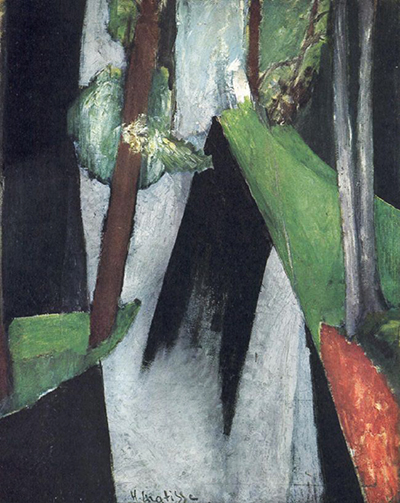In Henri Matisse's painting portfolio, Sunlight in the Forest is probably one of the most abstract. According to studies, the painting has a high vantage point compared with abstract paintings from other notable professional painters.
Currently, the picture is possibly located at the Brooklyn Museum, full of the rich history of Henri Matisse's artworks. Breaking down the different parts of the painting has never been satisfactory for any painting enthusiasts as more and more perspectives get unlocked often. It seems best to study abstract painting based on a single point in space. The artwork features different elements with no clear theme, but it depends on the viewer's perspective. Some light points and shadows seem to be creating contrasts with each other giving more abstractness to the painting.
The dark shadows of the painting also seem to be having different shades changing from dark to light shades all through the painting. Anyone can interpret the paintings' items in thousands of ways, and no one would still be certain of what they are looking at. The more you look at the Sunlight in the Forest by Henri Matisse, the more questions and answers you get.
The colours represented are green, dark brown, a standard brown, dark grey, light grey, and white. These colours have different shades of each, which seem scattered everywhere, but with a better look at the painting, it seems the elements were probably well thought of. The colours also appear to be pale-hued. The dark black paint seems to be cutting through the different aspects while still trying not to dominate the whole painting giving life to the rest of the patterns.
The white or light grey colours could represent sunlight cutting through vegetation like plants represented by the green colour. It might be a dark, lonely forest that only allows necessary light to pass through to feed the living ecosystem. The intense shadows contrast to the paradoxical sunlight that seems to be sipping in but not covering as much as it needs due to the dominating darkness. The thick brown stroke at the side could show a significant point on which the plants hold on to as they try to follow the direction to which the light is coming from, giving a sense of direction to the whole painting. The abstract elements seem forceful, bringing out the positive forms of the painting and adding more value and abstractness to it. The unresolved tensions and uncertainties of the painting make it even more unique in the long run.




